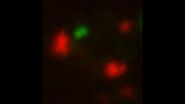SUNDAY, 18 Oct. Geospatial Analysis of Human-Megafaunal Overlap in North America: Lead author Meaghan Emery and colleagues write that the role of humans in the disappearance of megafauna during the late Pleistocene extinction is a source of ongoing debate and that understanding this is particularly important in light of humanity's role in the ongoing "Anthropocene extinction." Learn more: https://gsa.confex.com/gsa/2014AM/webprogram/Paper247318.html.
The Utilization of Paleontological Data in Ecological Research in the First Decade of the 21st Century: In this study, lead author J. Bret Bennington and colleagues find that "the increasing frequency with which fossils are being used to inform studies of modern ecological processes and communities ... indicates that Conservation Paleobiology is a research program whose time has come." Learn more: https://gsa.confex.com/gsa/2014AM/webprogram/Paper244541.html.
Also on SUNDAY Using the Extended Price Equation to Analyze Species Selection in Mammalian Body Size Evolution across the Paleocene/Eocene Thermal Maximum. https://gsa.confex.com/gsa/2014AM/webprogram/Paper247086.html
The Role of the Siberian Traps in the Permian-Triassic Mass Extinction: Analysis through Chemical Fingerprinting of Marine Sediments using Rare Earth Elements (REES). https://gsa.confex.com/gsa/2014AM/webprogram/Paper247325.html
MONDAY, 20 Oct. Threatened Species in the Fossil Record: The Invisible Extinction: The anthropogenic decline in biodiversity over the last several centuries has been dubbed the "Sixth Extinction," in line with the five major mass extinctions commonly recognized in the fossil record. Lead author Roy E. Plotnick and colleagues ask whether species that are either threatened or have recently gone extinct have a fossil record. That is, they write, "in the absence of the historic record, would the existence of these species be known in the future?" Learn more: https://gsa.confex.com/gsa/2014AM/webprogram/Paper242936.html.
Testing Links between Campanian Ignimbrite Volcanism, Climate, and the Decline of the Neanderthals: Lead author Benjamin Alexander Black and colleagues discuss how the eruption of the Campanian Ignimbrite 40,000 years ago may (or may not) have influenced the final decline of the Neanderthals and a possible technological and cultural transition for "anatomically modern humans." Learn more: https://gsa.confex.com/gsa/2014AM/webprogram/Paper250287.html.
Mapping Future Fire Threats Associated with Climate-Driven Biome Shifts in North America: Climate change projections indicate that many regions will become more susceptible to fire in the future. Lead author Nicholas G. Walding and colleagues present a unique approach to identifying and assessing future fire threats in North America. They write that fire-risk changes in areas adjacent to the arctic tundra, boreal forest, temperate deciduous forest, and southwestern U.S. deserts will result in new threats to both humans and the natural world. Learn more: https://gsa.confex.com/gsa/2014AM/webprogram/Paper245996.html.
More on MONDAY A Calcium Isotope Excursion associated with the End-Triassic Mass Extinction: Implications for Ocean Acidification and Carbon Cycle Dynamics. https://gsa.confex.com/gsa/2014AM/webprogram/Paper248873.html
TUESDAY, 21 Oct. Triggering of the Largest Deccan Eruptions by the Chicxulub Impact: Did the Chicxulub impact trigger the massive eruptive pulse at the end of the Deccan Traps main-stage eruptions? If so, which contributed more significantly to the infamous Cretaceous-Paleogene (K-Pg) mass extinction? Lead author Mark Richards and colleagues (including co-author Walter Alvarez) present the most recent findings regarding this intriguing topic. Learn more: https://gsa.confex.com/gsa/2014AM/webprogram/Paper243809.html.
New Information about the Internal Anatomy and Taphonomic History of Trilobites Revealed through CT Scanning: Lead author Michael A. Rutana and colleagues describe findings from CT imaging of trilobites, writing, "The mineralization around the digestive tract contrasted with the fossilization processes that affected the calcite-reinforced exoskeleton. CT imaging also reveals that preserved guts can be used as geopetal indicators." Learn more: https://gsa.confex.com/gsa/2014AM/webprogram/Paper249771.html.
A Driven Trend toward Larger Size in the Evolution of Marine Animals: The history of animal size over evolutionary time remains poorly documented, and the underlying controls are not well understood. Here, lead author Noel A. Heim and colleagues present a dataset of body sizes for 17,172 genera of fossil marine animals spanning the past 540 million years. Their data show that the size of the typical marine animal in the fossil record has increased substantially. Learn more: https://gsa.confex.com/gsa/2014AM/webprogram/Paper247680.html.
Mass Extinctions as Drivers of Predictability in the History of Marine Life: Mass extinctions are generally considered to be sources of unpredictability: They disrupt potential evolutionary trends, kill off successful lineages, and eliminate traits that favor success in "normal" times. The extinction of the non-avian dinosaurs is a classic example. For marine fauna, Andrew M. Bush and Sara B. Pruss suggest that some mass extinctions had the opposite effect on the history of life: They were, in no small measure, a source of predictability. Learn more: https://gsa.confex.com/gsa/2014AM/webprogram/Paper247921.html.
Also on TUESDAY Controls on Eukaryotic Fossil Diversity in the Tonian and Cryogenian Periods. https://gsa.confex.com/gsa/2014AM/webprogram/Paper246730.html
And on WEDNESDAY, 22 Oct. The Role of Fossils in Deciphering Trends in Metazoan Disparity. https://gsa.confex.com/gsa/2014AM/webprogram/Paper246313.html
Session Highlight: T200. Advancing the Digitization of Paleontology and Geoscience Collections: Projects, Programs, and Practices. Morning: https://gsa.confex.com/gsa/2014AM/webprogram/Session35281.html. Afternoon: https://gsa.confex.com/gsa/2014AM/webprogram/Session36614.html.
INFORMATION:
Contact: Christa Stratton
+1-778-331-7625 during the meeting, 19-22 Oct. 2014
+1-303-357-1093 after the meeting
cstratton@geosociety.org
The Paleontological Society (PS), founded in 1908, is an international nonprofit organization devoted exclusively to the advancement of the science of paleontology: invertebrate and vertebrate paleontology, micropaleontology, and paleobotany. It is an Associated Society of The Geological Society of America (GSA) and regularly sponsors scientific presentations at GSA annual meetings. The Geological Society of America, founded in 1888, is a scientific society with more than 26,500 members from academia, government, and industry in more than 100 countries. GSA encourages cooperative research among earth, life, planetary, and social scientists, fosters public dialogue on geoscience issues, and supports all levels of earth science education.


